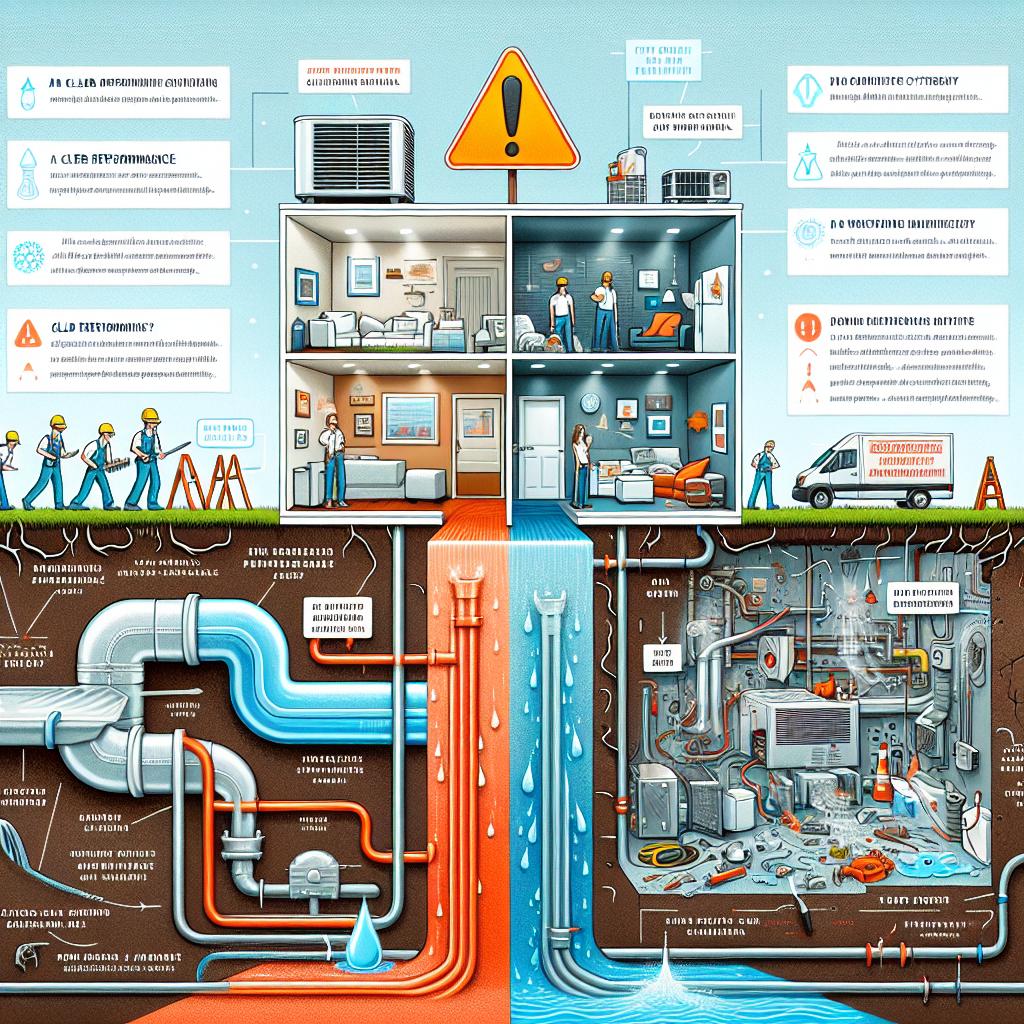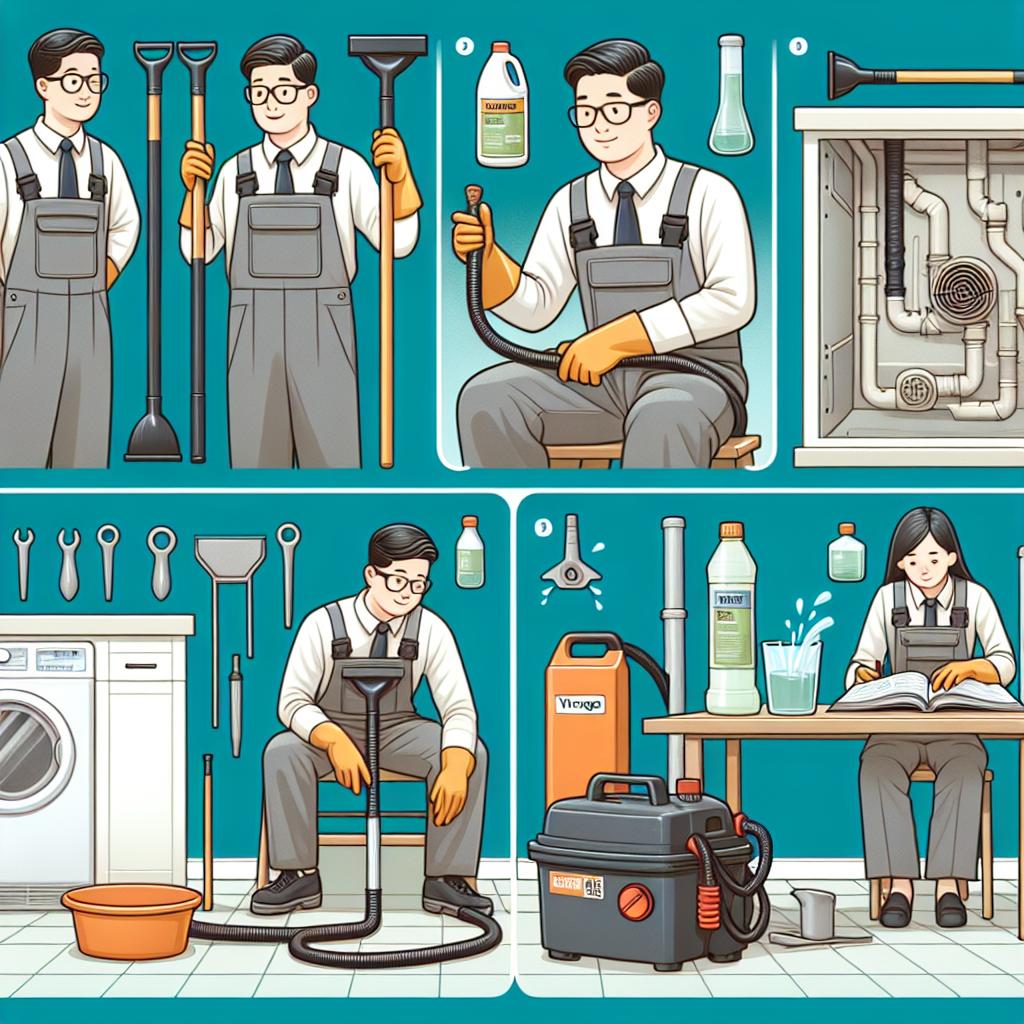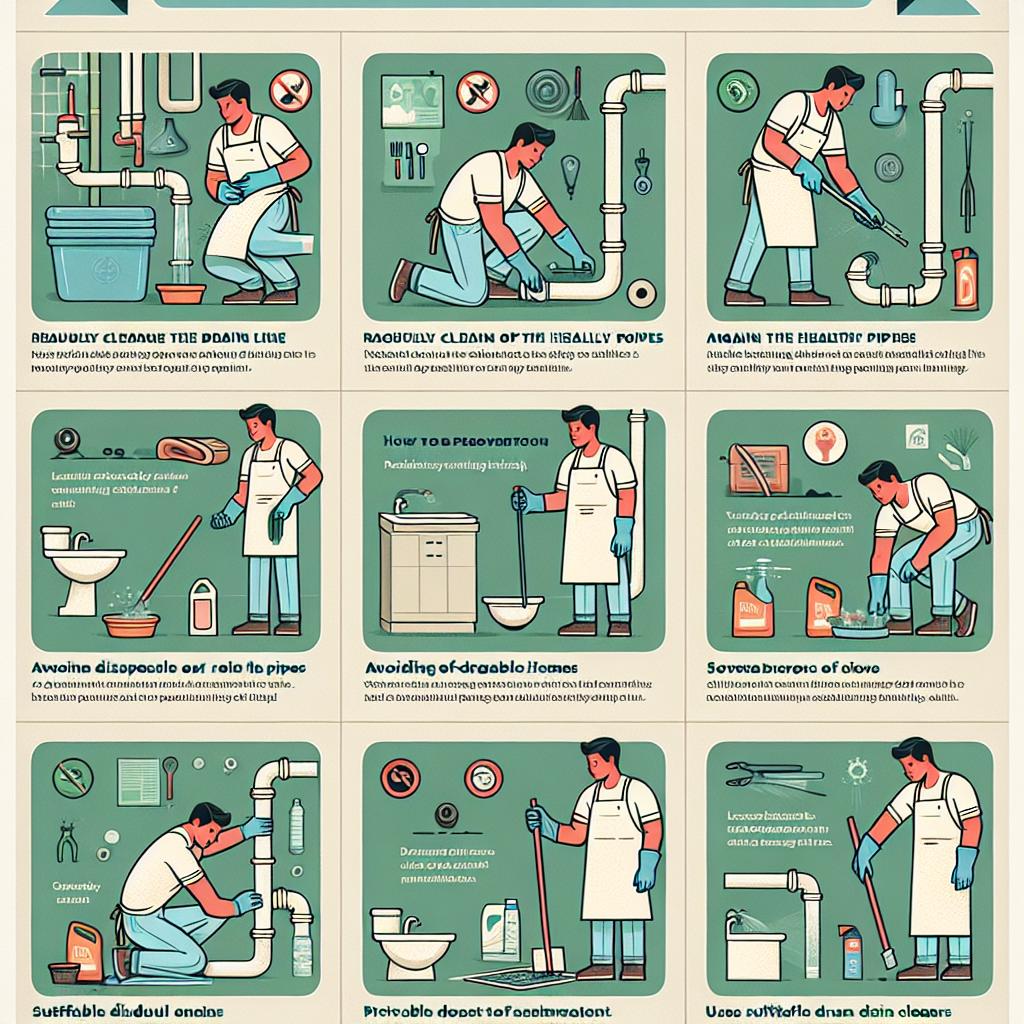When you flip the switch to cool down your space on a sweltering summer day or warm up during the chill of winter, your HVAC system quietly goes to work, ensuring comfort in your home. However, like all dedicated workers, it needs a little maintenance to keep running smoothly. One often-overlooked component of your heating and cooling system is the drain line, a vital pathway that carries away condensation and prevents backup issues. Over time, this line can become clogged with dirt, algae, and other debris, leading to poor performance and potential damage. In this article, we’ll explore straightforward techniques for cleaning your HVAC drain line, helping you keep your system efficient and your indoor air quality pristine. Get ready to roll up your sleeves and discover the steps to ensure your system flows freely!
Understanding the Importance of a Clear HVAC Drain Line
A properly functioning drain line is crucial for any HVAC system, as it plays a vital role in removing excess moisture produced during the cooling process. If this line becomes clogged, it can lead to a series of complications, including mold growth, water damage, and even overheating of the system. Understanding how to maintain a clear drain line ensures that your HVAC operates efficiently, promoting better air quality and prolonging the lifespan of the equipment.
Regular maintenance of the drain line not only prevents potential issues but also saves you from costly repairs in the future. Here are some benefits of a clear HVAC drain line:
- Prevention of Water Damage: A clear drain line prevents overflow that can lead to water damage in your home.
- Improved Air Quality: Stagnant water can lead to mold, which adversely affects indoor air quality.
- Enhanced System Efficiency: A clear line ensures that the HVAC system operates smoothly, improving energy efficiency.
- Cost Savings: Regular cleaning can reduce the likelihood of emergency repairs, saving you money in the long run.

Essential Tools and Materials for Effective Cleaning
To effectively clean your HVAC drain line, it’s crucial to have a well-prepared toolkit. Start with the following essentials:
- Wet/Dry Vacuum: Ideal for suctioning out clogs from the drain line.
- Pipe Brush: A long, flexible brush to remove debris inside the drain pipe.
- Distilled Vinegar: A natural solution that helps break down grime and algae buildup.
- Hot Water: Utilized to flush the line and enhance the cleaning process.
- Bucket: To catch any water or debris while cleaning.
In addition to these tools, some preventive materials can greatly enhance your cleaning routine. Consider investing in the following:
- Drain Pan Tablets: These help in preventing algae and bacteria growth.
- Rubber Gloves: Protect your hands while working with cleaning solutions.
- Pump-out Cleaner: Regular use helps maintain clear drain lines.

Step-by-Step Guide to Unclogging Your HVAC Drain Line
Clogged HVAC drain lines can lead to significant issues, including water damage and reduced efficiency. To tackle this problem, first gather your tools. You’ll need a wet/dry vacuum, a small brush, a vinegar or bleach solution, and a bucket for extra water. Once you’re equipped, start by locating the drain line, usually found near your indoor unit. If possible, disconnect the drain line from the pan. This can often involve unscrewing a few screws or loosening a fitting. Place the bucket underneath the line to catch any residual water, ensuring you keep your workspace clean.
Next, use the wet/dry vacuum to remove any blockage from the drain line. Create a tight seal around the line with the vacuum hose to maximize suction. If the clog persists, pour a mixture of equal parts vinegar and hot water down the line, allowing it to sit for about 30 minutes. This natural cleaner helps dissolve the buildup. Afterward, flush the line with fresh water to clear out any remaining debris. If you notice continued issues, it may be beneficial to inspect the condensate pan for damage or to consider professional assistance for a thorough checkup.

Preventive Measures to Maintain a Healthy Drain Line
To ensure the longevity and efficiency of your HVAC system, implementing regular preventive measures is essential. One of the most effective strategies is to perform routine inspections of the drain line. Check for clogs or buildup by visually inspecting the drain line and its connections. Keeping the surrounding area clear of debris can also help prevent blockages. Additionally, using a wet/dry vacuum to clear any minor obstructions can save you from more extensive problems down the road.
Another proactive approach is to incorporate a monthly maintenance regimen. Flushing the drain line with a mixture of vinegar and water can help eliminate algae and mold buildup. It’s also wise to install a drain pan with a safety switch that will shut off the HVAC system in the event of a blockage, preventing further damage. For added protection, consider using drain line tablets designed to dissolve buildup and keep your system running smoothly. Remember, a little maintenance goes a long way in avoiding costly repairs and ensuring your home remains comfortable year-round.
Q&A
Q&A on How to Clean Your HVAC Drain Line
Q1: Why should I clean my HVAC drain line?
A: Cleaning your HVAC drain line is crucial to prevent clogs that can lead to water leaks, mold growth, or damage to your air conditioning system. A clear drain line helps maintain optimal airflow and ensures your system runs smoothly, saving you money on repairs and energy bills.
Q2: How often should I clean the drain line?
A: It’s recommended to clean your HVAC drain line at least once a year, typically before the cooling season starts. However, if you live in a humid climate or have pets, you might want to clean it more frequently to avoid any potential issues.
Q3: What tools do I need to clean the drain line?
A: You’ll need a wet/dry vacuum, a funnel, a cleaning brush, and possibly some distilled vinegar or a drain line cleaner. Having a flashlight handy can also be useful to check for any blockages.
Q4: Can I clean the drain line myself, or should I hire a professional?
A: You can clean the drain line yourself if you’re comfortable with basic maintenance tasks and have the right tools. However, if you’re unsure or if the system seems severely clogged, it might be best to hire a professional.
Q5: How do I actually clean the drain line?
A: Start by locating the drain line, typically a PVC pipe near your indoor unit. Use a wet/dry vacuum to remove any standing water and debris from the line. You can then pour a cup of distilled vinegar down the drain to help break down any buildup. For stubborn clogs, a specialized drain cleaner may be necessary. Remember to flush the line with water afterward to ensure everything is clear.
Q6: What are the signs that my drain line is clogged?
A: Common signs include water pooling near your indoor unit, musty odors, or a noticeable decrease in your HVAC system’s efficiency. If you notice any of these signs, it’s a good idea to check and clean the drain line promptly.
Q7: Will cleaning my drain line improve my HVAC system’s performance?
A: Absolutely! A clean drain line allows your HVAC system to operate more efficiently, improving airflow and cooling capabilities. This can lead to a more comfortable home environment and potentially lower energy bills.
Q8: Are there preventive measures I can take to keep the drain line clean?
A: Yes! Regular maintenance is key. You can also install a float switch to shut off the unit if the drain line becomes clogged. Additionally, consider pouring vinegar down the line every few months to prevent buildup. Keeping an eye on your HVAC system’s performance will also help you catch any issues early.
Q9: What if I attempt to clean it and the clog remains?
A: If the clog persists after your efforts, it may be time to consult a professional HVAC technician. They have the tools and expertise to tackle more severe clogs and can inspect your system for other underlying issues.
Q10: Is it complicated to clean the drain line, or can anyone do it?
A: Cleaning the drain line is a straightforward process that most homeowners can handle with a bit of care and the right tools. Just take your time, follow the steps carefully, and prioritize safety. If it feels beyond your comfort zone, seeking professional help is always a good option.
Wrapping Up
maintaining a clean HVAC drain line is crucial for the longevity and efficiency of your heating and cooling system. By incorporating these simple cleaning techniques into your routine maintenance, you can prevent unwanted clogs and ensure that your system operates smoothly year-round. Remember, a little effort today can save you from more significant headaches—and expenses—tomorrow. So, roll up your sleeves, gather your tools, and embrace the satisfaction that comes with caring for your home’s most essential systems. With a little diligence, you can breathe easier, knowing that your HVAC system is in top condition, ready to keep you comfortable through every season. Happy cleaning!

